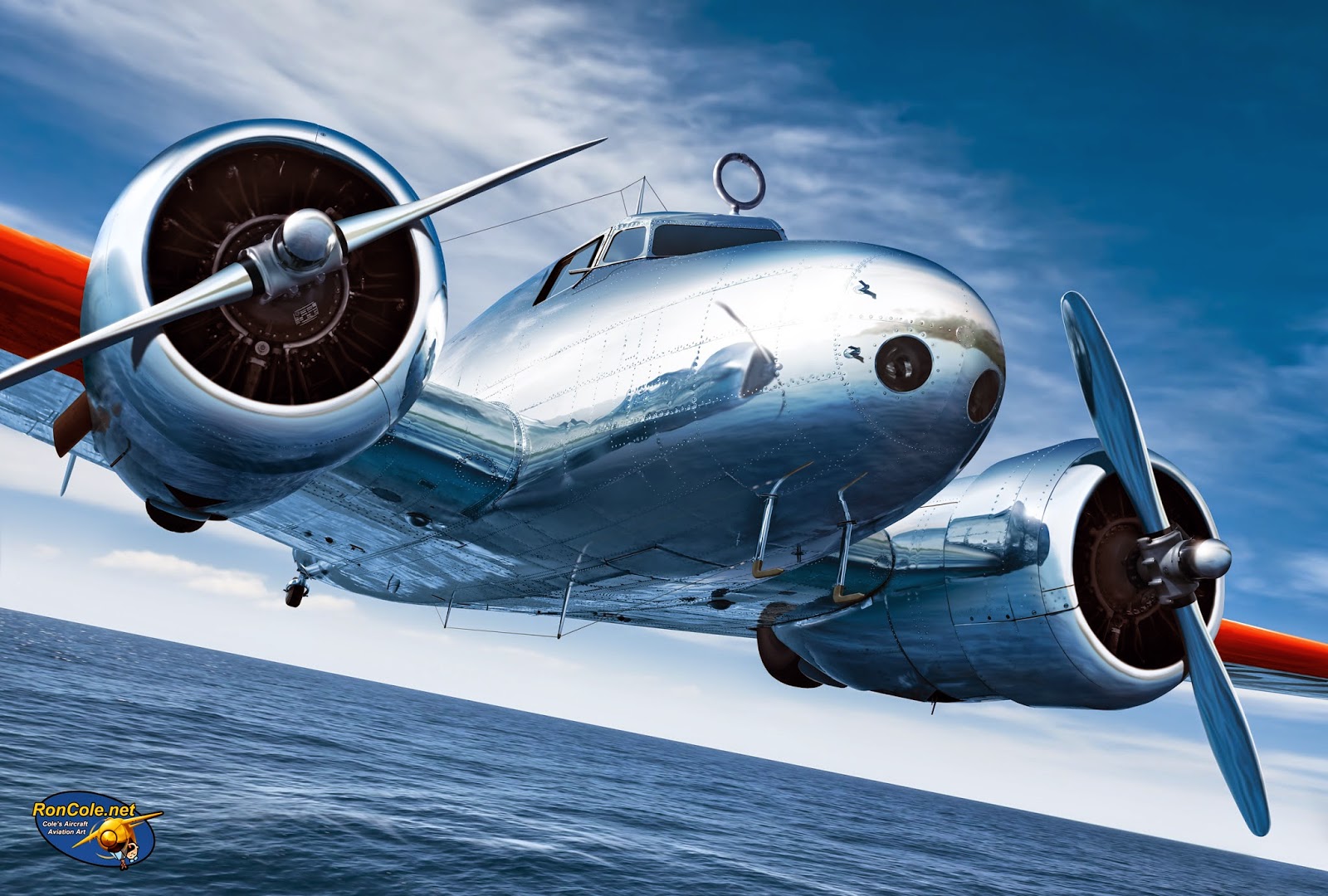Tuesday, January 27, 2015
The Lockheed Electra of Amelia Earhart
It's hard to paint a tragedy. As a general rule I don't even paint wartime aviation compositions in which anyone is being shot down. It's just not part of the story that I wish to emphasize, and I've found that the veterans themselves have greatly appreciated that fact. When the idea of a composition based upon the last moments of Amelia Earhart's Lockheed Electra was proposed to me, however, I admit that I liked the idea. It hadn't been done. With the continuing search for her aircraft in the news recently, it was timely. Thus I grappled with how I could depict the event in a way that would convey the least amount of tragedy.
There are many theories that purport to explain the disappearance of Earhart and Fred Noonan in July of 1937. The only one I feel qualified to weigh in on is the idea that their Electra was shot down by the Japanese. The Japanese Naval aviation community in those days was a very small and closely knit cadre of elite pilots, and I've known many of them that survived World War II. I've heard stories about all sorts of controversial pre-war incidents, including the bombing of the USS Panay, but not a thing about any involvement with Earhart's aircraft. It wasn't a secret that could have been kept at the time, and it certainly could not have been kept over the ensuing decades. The remaining theories have Earhart either crashing into the middle of the ocean, or ditching near one of a few possible Pacific islands where she and Noonan might have survived for some time. One story even has them conceiving a child at some point, and much later passing away. In all honesty, and in keeping with the principle of Occam's razor, I think they probably went down far at sea. But I just couldn't bring myself to celebrate that end in a painting. I wanted there to be hope in my rendition of the story.
I suspect that if land had been sighted that day in 1937, Earhart would have stayed aloft as long as possible in order to use her altitude for better radio range. She'd been transmitting all morning but had not been able to receive. She had no way of knowing if anyone could hear her or not, but giving the world every opportunity to get a bearing on her location was her best hope of eventual rescue. One engine would have run out of fuel before the other, and she likely would have stayed aloft until the other quit. In my painting I've depicted her aircraft mere seconds before it hit the water - but with the green and hopeful reflection of an island straight ahead of her.
I'd like to think that my painting reflects reality; that the ditching of Amelia Earhart's Electra only meant the closing of one particular chapter in her life and the opening of another. It is still possible that she and her navigator lived out an existence of significance on some remote Pacific atoll. Maybe they even did have a family and knew new pleasures together. That's the hope I opted to try and capture in my homage to Amelia and Fred. I think it came out nicely.
- Ron Cole
Subscribe to:
Post Comments (Atom)



Great post Ron! Thanks for taking on my suggestion. Wonderfully done... Onto Charles Lindbergh!
ReplyDelete